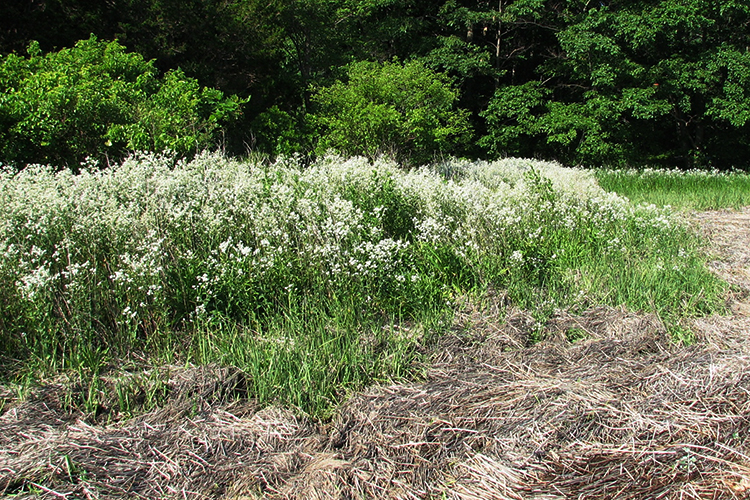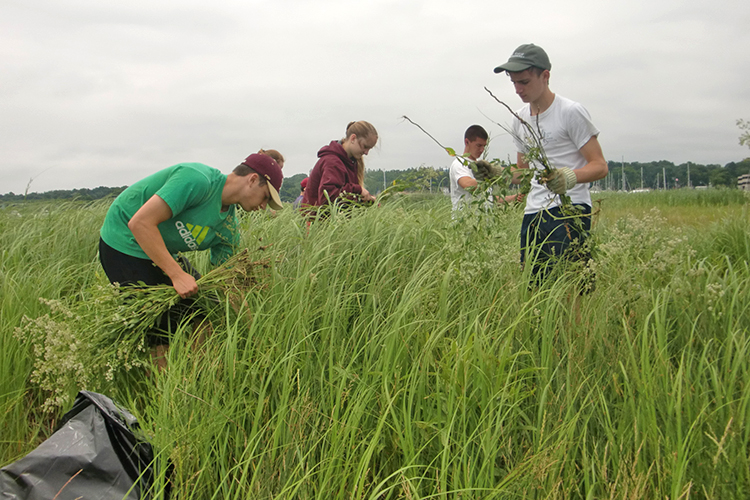Perennial Pepperweed
Perennial Pepperweed Control Project
Since 2006, Mass Audubon has worked with the U.S Fish and Wildlife Service, the Massachusetts Bays Estuary Program, and the other NGO partners to battle invasive Perennial Pepperweed in the Great Marsh on the northern coast of Massachusetts. This effective partnership has attracted numerous additional organizations and hundreds of volunteers each year since it began. Using sophisticated GIS mapping in the field, we address over 3,300 sites where Pepperweed has been found by hand-pulling and herbicide treatment. Volunteers and seasonal staff have removed over 11,000 pounds of the plant in one season! Over 40% of the sites we have been addressing have been clear of Pepperweed for multiple years.
The Great Marsh is one of the most important coastal ecosystems in northeastern North America. It encompasses 20,000 acres of barrier beach, dunes, salt marsh, maritime forests, and water bodies, and contains the largest contiguous stretch of salt marsh north of Long Island.

Why This Matters
Perennial Pepperweed (Lepidium latifolium) is an herb that's native to Europe and western Asia that was introduced—perhaps accidentally—to the United States. No matter how it arrived, it's been growing and spreading at an alarming pace in the last few decades, particularly in salt marshes.
Since the seeds are transported with the tides, new stands can sprout hundreds of yards from their source—a mile or more if rapidly moving currents are present.
A single patch of pepperweed can grow into a dense, monoculture stand after only a few seasons. These stands outcompete native salt marsh vegetation, degrading wildlife habitat and suppressing biodiversity.

Community Service & Volunteer Opportunities
Local schools and citizens are helping Mass Audubon and other conservation partners to map and control pepperweed in Massachusetts. You may join a group or volunteer to "adopt-a-site."
Mapping may occur year-round, and pulling takes place from May–August. Pepperweed is typically found in coastal areas, but may be found along roads.
Perennial Pepperweed Control Handbook
The Perennial Pepperweed Control Handbook was created in 2011 for municipalities, nonprofit organizations, and others who will lead the effort to identify and control pepperweed in their given jurisdiction.
It contains many lessons learned from battling pepperweed and other invasive species. We hope that this is of use to others for effectively controlling pepperweed in other regions in Massachusetts, as well as preventing its spread to new areas.
Complete Handbook + Appendices
Sections
Stay Connected
Don’t miss a beat on all the ways you can get outdoors, celebrate nature, and get involved.



